Butterflies and Moths in Cornwall
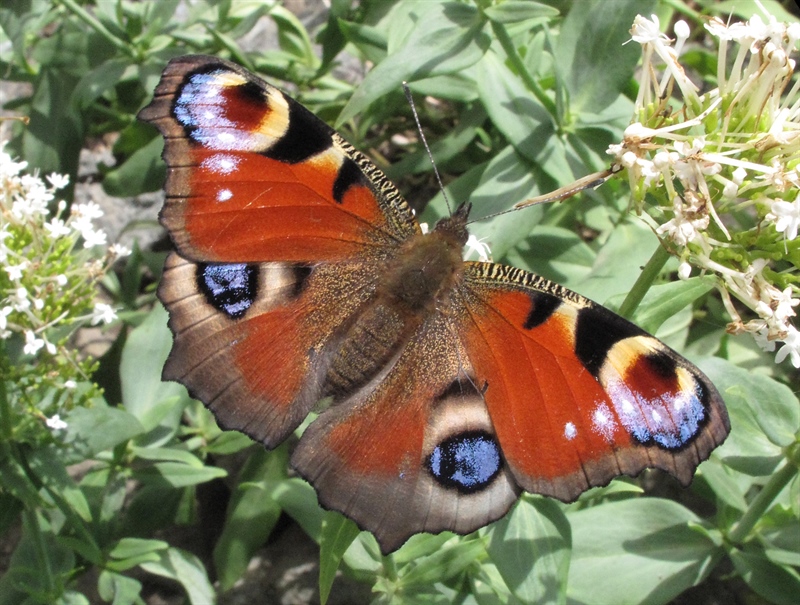
Peacock Butterfly - Imago of Aglais io
Think about a summer’s day in your childhood watching butterflies fluttering around and then think of that same day without experiencing the sense of wonder and delight that these colourful insects bring.
The UK has 59 butterfly species – 57 resident species of butterflies and two regular migrants – the Painted Lady and Clouded Yellow. Butterflies such as the Painted Lady migrate annually from North Africa.
The rarest butterfly in the UK is the High Brown Fritillary and the British Swallowtail is one of the largest UK butterflies and also rare.
Over 60 species of butterflies have been recorded in Cornwall and in the British Isles and there are over 2500 species of moth including the microlepidoptera.
In Cornwall, 38 species of butterfly are regularly seen which includes 35 residents and 3 migrants.
Other rare migrants do occur in Cornwall including the Brown Hairstreak, Queen of Spain Fritillary, Wood White and White-letter Hairstreak which used to be resident here. In recent years sightings have been infrequent but it is still possible that small, isolated colonies could still be discovered in north and east Cornwall.
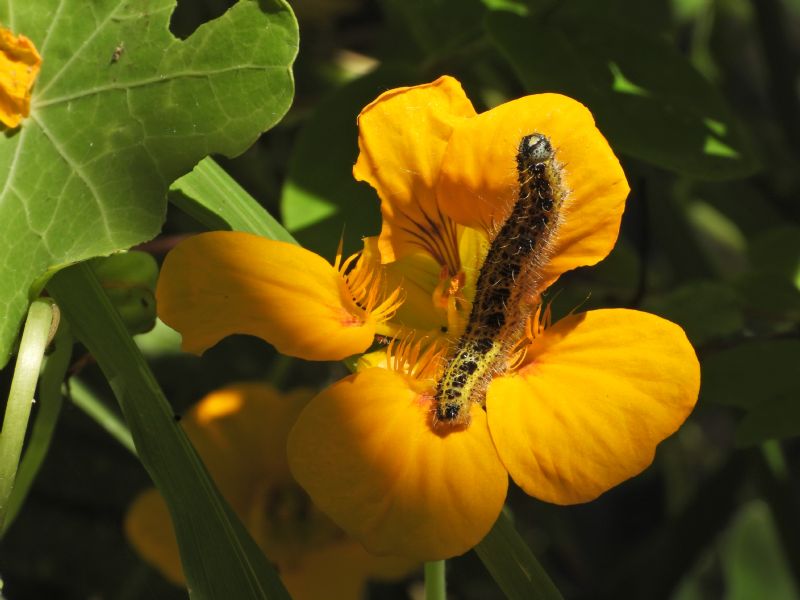
Caterpillar of Large White Butterfly - Larva of Pieris brassicae.Nasturtiums are easy to grow in any size of garden and self seed with ease so plenty of food for the larvae and a wonderful display of colour for you.
How You Can Help Butterflies and Moths
As pollinating insects and for their sheer beauty and variety, butterflies and moths are an essential part of a healthy eco-system, important for the environment and vital for wildflowers, plants and food production.
During all stages of their lives (see below for details) they are the prey of many predators such as mammals including bats, birds, other insects and spiders.
Many butterflies and moths have specific food plants on which their larvae feed. The striking Cinnabar Moth larvae with their black and yellow stripy markings are a perfect example of this with the moth larvae often seen in their hundreds feeding on clumps of ragwort. At times the caterpillars appear camouflaged when seen on the stems and flowers of the ragwort.
Some of these food plants can be seen in the butterfly and moth lists below. If these food plants are in decline or disappear then this will directly impact the survival of butterfly and moth species.
Butterflies and moths are affected by herbicides, pesticides and other chemicals released into the environment so it is important to practice non intensive farming without using pesticides.
Everyone can play their part in protecting and encouraging butterflies and moths whether you’re a farmer or landowner, whether you live in a home with a garden or a flat with a window box.
Planting certain wildflowers, shrubs and even trees can attract butterflies and moths and provide a place for them to lay their eggs and a food resource for the caterpillars.See the butterfly and moth lists below.
Butterflies will often overwinter in sheds, conservatories, greenhouses outbuildings and even houses so avoid disturbing them. When enough sunlight warms these locations the butterflies wake from their hibernation. These early butterflies appear in the first months of the year and their offspring will be on the wing later in the summer. Hibernating butterflies won’t do any harm to your property. Let them sleep and then when they become active in spring, open a window so they can get out to feed.
Log piles and other areas of your garden provide shelter for overwintering butterflies so please leave some areas wild and undisturbed. Not cutting back plants like ivy, holly and bramble during winter will help hibernating butterflies. The Brimstone spends the winter months among the leaves of these plants before emerging in the spring.
Hedgerows and road verges need to be managed well so they are not destroyed before eggs are laid and when larvae are feeding on them.
Every year, usually in July and August the Big Butterfly Count takes place over three weeks. This nationwide citizen science survey helps to assess the health of our butterfly and day flying moth populations and our environment. See the web link below for more details.
Butterfly and Moth Conservation
Cornwall Butterfly Conservation works to discover the current status of butterflies in Cornwall in order to establish which species are increasing and which are in decline. The Heath Fritillary is a successful re-introduction in the Tamar Valley. After being locally extinct by early 2000 the population has now been stable since 2006 as a result of coppice management, ride management and bracken control.
You can help Butterfly Conservation by becoming a member of your local group, volunteering your time, submitting your records of butterfly sightings, making a donation or running an event on behalf of the charity.Organisations such as the National Trust also monitor butterfly populations on properties throughout Cornwall such as Trelissick, Cotehele, Roseland and the Lizard. They have also introduced programmes to support the reintroduction of butterfly species such as the programme in the Tidna Valley, North Cornwall where wild thyme has been planted as part of a larger programme to reintroduce the Large Blue butterfly to the British Isles. Even when this species was first recorded in 1795 it was described as rare, and since then modern farming methods have destroyed the insect's vital habitats. The UK's last specimen was spotted on Dartmoor in 1979. Following the introduction of stock from Sweden in a number of carefully managed locations, by 2006 the estimated number of adult Large Blues on the 11 sites was 10,000 - the largest number seen in the British Isles for over 60 years. For more information see the Butterfly Conservation website.Cornwall’s Biodiversity Action Plan Volume 4 lists 16 species of butterfly and 69 moth species.
Butterflies and moths can be found across the whole of Cornwall. Some species can be seen in multiple habitats, while others have very specific needs so they are found in specialised habitats.
Life Cycle of a Butterfly
No adult butterfly can live for more than a year. Adult butterflies use colour to attract mates and avoid predation, but also to raise their body temperature by basking and warming up. This is particularly important in British butterflies.
All butterflies undergo complete metamorphosis. To grow into an adult they go through 4 stages: egg, larva, pupa and adult. Each stage has a different goal - for instance, caterpillars need to eat a lot, and adults need to reproduce.
Stage 1 The Egg
The life of a butterfly begins as a fertilised egg. Female butterflies lay many eggs on the stems or leaves of plants. The eggs can be cylindrical, oval or spherical.Most butterflies only lay their eggs on a few selective host plants, with each species having a preference for different plant types. It is therefore very important to promote a diversity of plant species.
Butterflies can select suitable plants using a combination of sight, smell and taste, with the butterfly identifying chemicals from the plant which signals it being a suitable host species for food.
The eggs are encased in a layer of chorion which is itself then covered by a waxy layer to ensure the eggs do not dry out.
The egg stage usually lasts between 3 to 7 days.
Stage 2 The Larva
Commonly known as a caterpillar, the purpose of the larva is to eat as much as possible and grow quickly. When the egg hatches the first thing the caterpillar will eat is the eggshell in which it was encased followed by the leaf or stem part on which the egg was laid. Larvae (caterpillars) have specific plants on which they feed so it is important for butterflies to lay their eggs on the correct plants. Before moving to the next stage in its lifecycle, the larva must increase its body mass more than 100 times from its hatchling size. This requires it to moult, shedding its cuticle (skin) and growing a new one which accommodates its larger size. This must happen several times, usually 4 to 6 moultings. The period of time between each moult (apolysis) is called an instar.
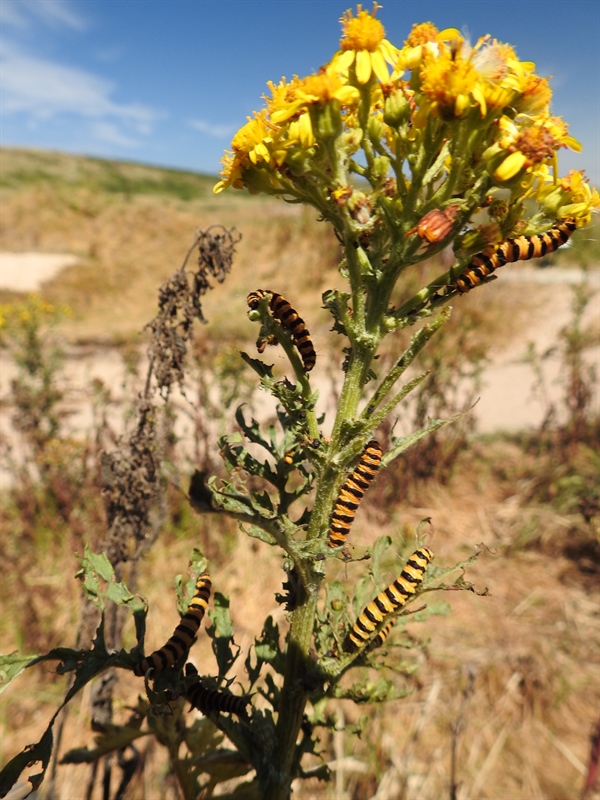
Cinnabar Moth Caterpillars - Larvae of Tyria jacobaeae
Stage 3 The Pupa
Commonly known as a chrysalis, the pupa next undergoes a spectacular transformation. What was the caterpillar becomes an unmoving (on the outside) vessel hanging on or near its food plant. From the outside it appears that nothing is happening but inside the pupa, the body of the caterpillar is going through metamorphosis (a complete change). The butterfly’s organs begin to develop and within a few days (or longer depending on the species of butterfly) there is a fully formed butterfly within the pupa. The casing of the pupa then becomes thinner and the newly formed wings become visible. Some butterfly species remain in the pupa stage for over a year, undergoing a hibernation or overwintering period as a pupa.
Stage 4 The Adult
The butterfly emerges from the pupa with wet and crumpled wings so spends time hanging while pumping fluid (hemolymph) into its wings. This expands the wings which then go through a hardening process enabling them to function and allowing the butterfly to take its maiden flight. This process takes several hours.
The process then begins again with adult female butterflies laying their eggs on their favoured food plants.
Anatomy of Butterflies and Moths
Butterflies and Moths are flying insects with two pairs of scale covered wings and two antennae. Like all insects, they have a three-part body (head, thorax and abdomen), 3 pairs of jointed legs on the thorax, compound eyes with thousands of lenses, and a segmented exoskeleton. They do not have any lips or teeth, just a long coiled tongue that forms a proboscis with which they can take in nectar.
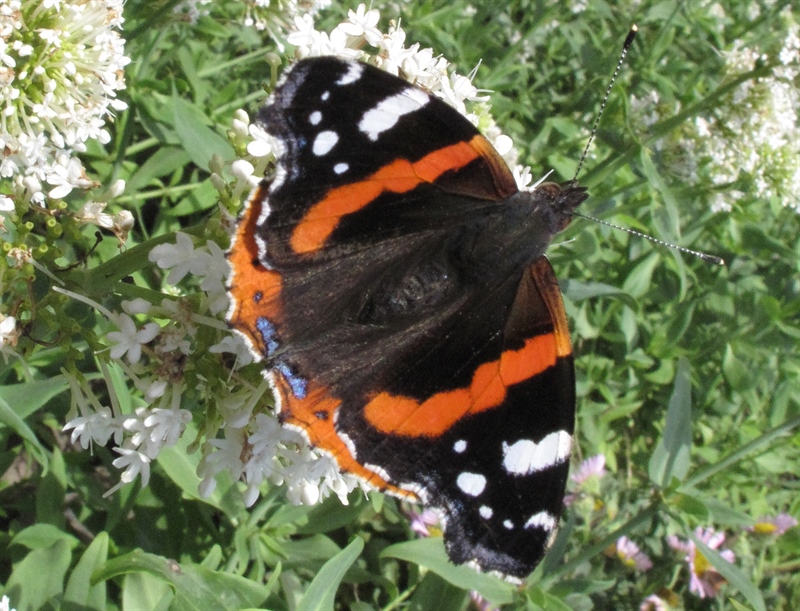
Red Admiral Butterfly - Imago of Vanessa atalanta
Where to Watch Butterflies in Cornwall
The rarest butterflies in Cornwall can only be seen in very specific habitats. Some of these sites are listed below.
Bodmin Moor - Pearl Bordered Fritillary, Marsh Fritillary, Small Pearl Bordered Fritillary
Breney Common and Redmoor - Marsh Fritillary, Small Pearl-bordered Fritillary, Small Heath, Green Hairstreak, Silver-studded Blue
Chapel Porth near St Agnes - Green Hairstreak
De Lank area, St Breward - Pearl-bordered Fritillary, Brimstone, Small Pearl-bordered Fritillary
De Lank (Pendrift) - Purple Hairstreak
Godolphin Woods - Purple Hairstreak
Goss Moor - Silver-studded blue
Greenscoombe Wood, Tamar Valley - Heath Fritillary, Brimstone, Silver-washed Fritillary
Helford River estuary, Oak Woodlands - Silver-washed Fritillary
Kenidjack/Pendeen Watch - Grayling, Silver-studded Blue, Green Hairstreak, Small Pearl-bordered Fritillary, Small Heath
Kynance Cove, Lizard Peninsula - Grayling, Small Pearl-bordered Fritillary, Wall, Small Heath, Dark Green Fritillary
Marsland/Hard Hills area - Pearl-bordered Fritillary, Small Pearl-bordered Fritillary, Silver-washed Fritillary, Marsh Fritillary, Marbled White, Purple Hairstreak, Brimstone, Dingy Skipper.
Murrayton SW coast path - Pearl-bordered Fritillary, Dingy Skipper
Newlyn Downs - Grayling, Small Heath
Penhale Sands near Perranporth - Dark Green Fritillary, Grizzled Skipper, Dingy Skipper, Silver-studded Blue and Brown Argus, Common Blue, Small Heath
Penlee Point - Marbled White, Wall, Small Heath, Green Hairstreak
Porthgwarra, Land’s End Peninsula - Grayling, Small Pearl-bordered Fritillary, Wall, Silver-studded Blue, Small Heath.
Predannack Cliffs, Lizard Peninsula - Marsh Fritillary, Small Pearl-bordered Fritillary
Prussia Cove/Cudden Point - Silver-studded Blue, Small Pearl-bordered Fritillary, Wall, Small Heath
Rame Head - Marbled White, Wall, Small Heath, Green Hairstreak
St Ives Bay - Silver-studded blue
Upton Towans, Hayle - Silver-studded Blue, Dark Green Fritillary, Brown Argus, Small Pearl-bordered Fritillary, Small Heath
Windmill Farm Nature Reserve, Lizard Peninsula - Marsh Fritillary, Small Pearl-bordered Fritillary
National Trust Locations including West Penwith, Cotehele, Glendurgan
List of Butterflies and Moths Recorded in Cornwall in 2019
Information can include the time of the year to see the species of butterfly and its food plant.
Butterflies
Brimstone (Gonepteryx rhamni) Larvae feed on Alder Buckthorn and Buckthorn
Brown Argus (Aricia agestis) Larvae feed on Common Rock-rose, Dove's-foot Crane's-bill, Common Stork'-bill,
Clouded Yellow (Colias croceus) Larvae feed on Clover plants
Comma (Polygonia c-album) Appear early in the year Larvae feed on Common Nettle, Hop , Elms, Currants, Willows
Gatekeeper (Pyronia tithonus) July and September Larvae feed on Grasses including Bents Fescues, Meadow-grasses, Common Couch
Meadow Brown (Maniola jurtina) One of the most abundant butterflies. Larvae feed on Fescues, Bents, Meadow- grasses, Cock's- foot, Downy Oat-grass, False Brome
Orange Tip (Anthocharis cardamines) April to June. Larvae feed on members of the cabbage family including Cuckooflower, Garlic Mustard, Hedge Mustard, Winter-cress, Turnip, Charlock, Large Bitter-cress, Hairy Rock-cress
Common Blue (Polyommatus icarus) May to September. Larvae feed on Common Bird's-foot-trefoil, Greater Bird's-foot-trefoil, Black Medick, Common Restharrow, White Clover, Lesser Trefoil
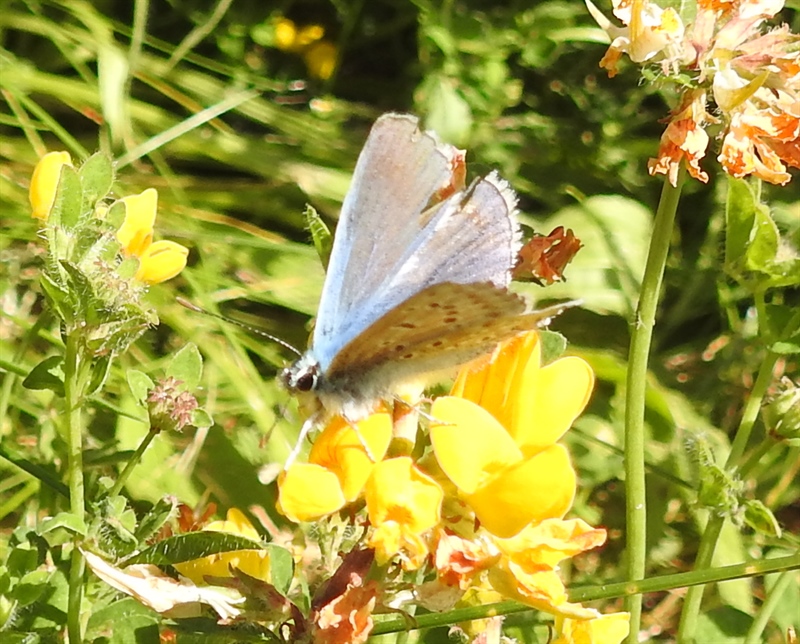
Common Blue Butterfly - Imago of Polyommatus icarus
Holly Blue (Celastrina argiolus) Late March. Larvae feed on Holly, Ivy, Spindle , Dogwoods, Snowberries, Gorses, Bramble
Long-tailed Blue (Lampides boeticus) a rare migrant. Larvae feed on plants in the Pea family, including Bladder-senna, Broad-leaved Everlasting-pea, Broom, Narrow-leaved Everlasting-pea, Mange-tout pea
Silver-studded Blue (Plebejus argus) Larvae feed on Heather, Bell Heather, Cross-leaved Heath, Gorses
Small White (Pieris rapae) March to October. Cabbages, Nasturtium, Wild Cabbage, Charlock, Hedge Mustard, Garlic Mustard, Hoary Cress, Wild Mignonette
Large White (Pieris brassicae) March to October. Larvae feed on members of the Cabbage family, including cultivated Cabbage, Brussel-sprouts, Oil-seed Rape. Nasturtium, Wild Mignonette, Sea-Kale
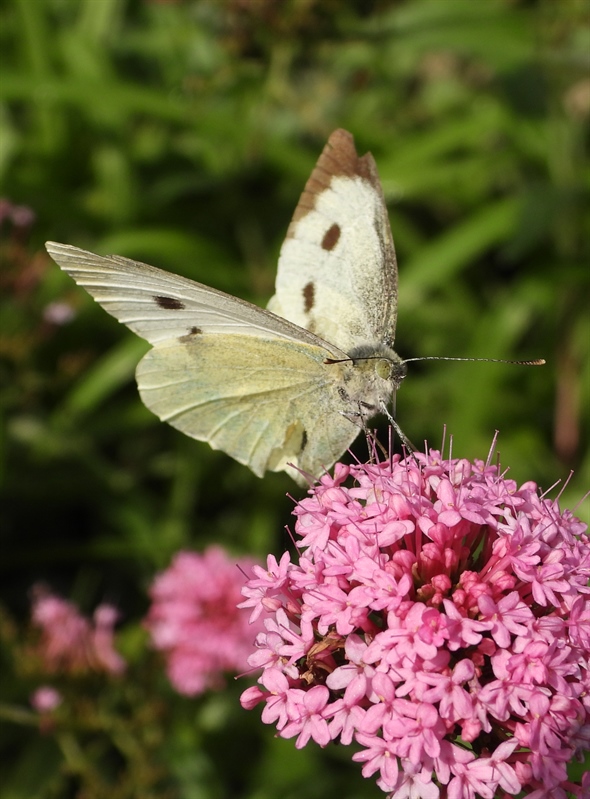
Large White Butterfly - Imago of Pieris brassicae
Green-veined White (Pieris napi) March to October. Larvae feed on Garlic Mustard, Cuckooflower, Hedge Mustard, Water- cress, Charlock, Large Bitter-cress, Wild Cabbage, Wild Radish, Nasturtium
Marbled White (Melanargia galathea) Larvae feed on Red Fescue, Sheep's-fescue, Yorkshire-fog, Tor-grass
Dingy Skipper (Erynnis tages) Larvae feed on Common Bird’s-foot-trefoil, Horseshoe Vetch, Greater Bird’s-foot-trefoil
Small Skipper (Thymelicus sylvestris) Larvae feed on Yorkshire-fog, Timothy, Creeping Soft-grass, False Brome, Meadow Foxtail, Cock’s-foot
Grizzled Skipper (Pyrgus malvae) Larvae feed on Agrimony, Creeping Cinquefoil, Wild Strawberry, Barren Strawberry, Tormentil, Salad Burnet, Bramble, Dog-rose, Wood Avens
Large Skipper (Ochlodes venata)/Ochlodes sylvanus) June and August Larvae feed on Cock’s-foot, Purple Moor-grass, False Brome, Tor-grass, Wood Small-reed
Painted Lady (Vanessa cardui) Larvae feed on a variety of plants including Thistles, Mallows, Common Nettle, Viper's-bugloss and some cultivated plants.
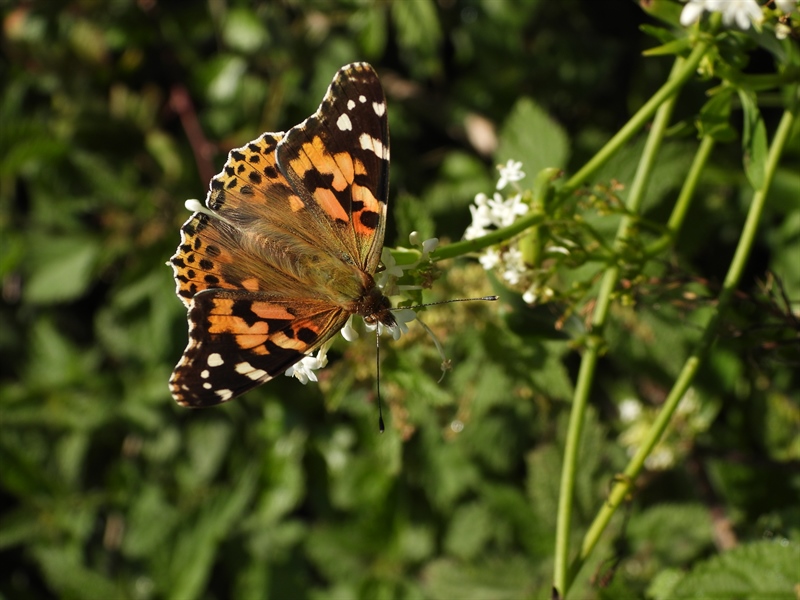
Painted Lady Butterfly - Imago of Vanessa cardui
Peacock (Aglais io) Appear early in the year Larvae feed on Common Nettle, Small Nettle, Hop
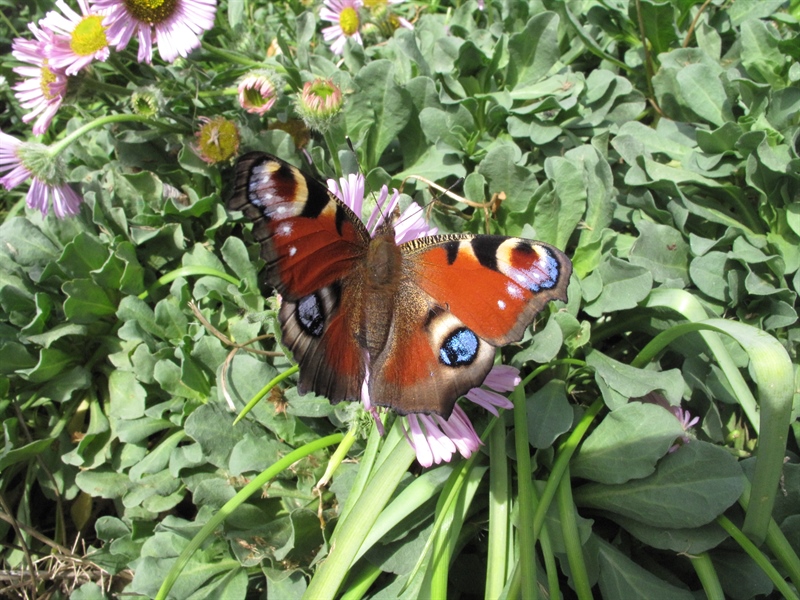
Peacock Butterfly - Imago of Aglais io
Ringlet (Aphantopus hyperantus) June and August Cock's-foot, False Brome, Tufted Hair-grass, Common Couch, Meadow-grasses
Small Copper (Lycaena phlaeas) Larvae feed on Common Sorrel, Sheep's Sorrel, Broad-leaved Dock
Small Heath (Coenonympha pamphilus) Larvae feed on Fescues, Meadow-grasses, Bents
Small Tortoiseshell (Aglais urticae) Appear early in the year Larvae feed on Common Nettle, Small Nettle
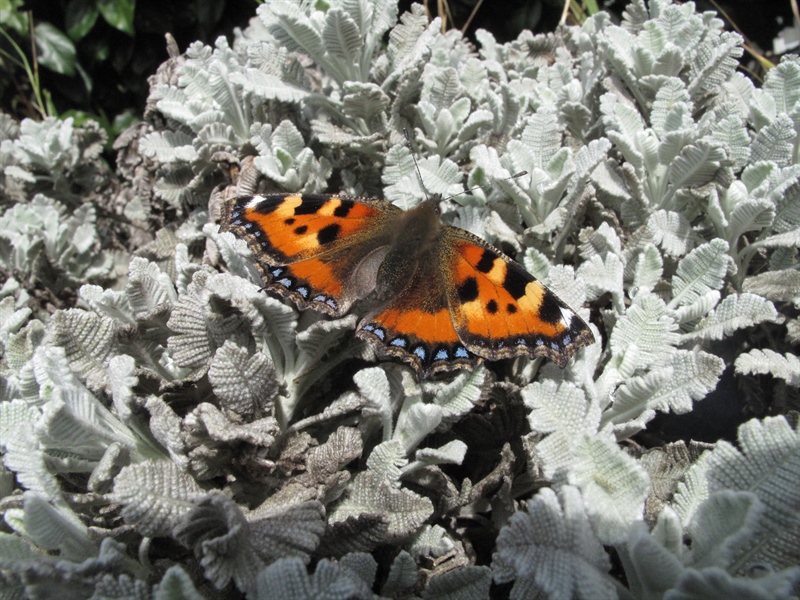
Small Tortoiseshell Butterfly - Imago of Aglais urticae
Speckled Wood (Pararge aegeria) Late March to May Larvae feed on False Brome, Cock's-foot, Yorkshire-fog, Common Couch
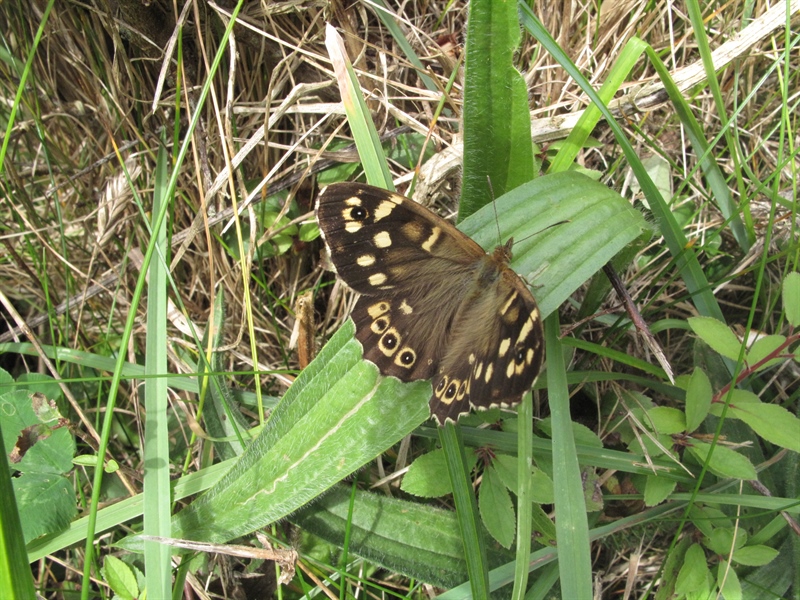
Speckled Wood Butterfly - Imago of Pararge aegeria
Red Admiral (Vanessa atalanta) Over-wintering appear early in the year and can be seen most of the year Larvae feed on False Brome, Cock's-foot, Yorkshire-fog, Common Couch
White Admiral (Limenitis camilla) Larvae feed on Honeysuckle
Green Hairstreak (Callophrys rubi) Larvae feed on Common Rock-rose, Common Bird's-foot-trefoil, Gorse, Broom, Dyer's Greenweed, Bilberry, Dogwood , Buckthorn, Cross-leaved Heath, Bramble
Purple Hairstreak (Neozephyrus / Favonius quercus) Larvae feed on Sessile Oak, Pedunculate Oak, Turkey Oak, Evergreen Oak
Dark-green Fritillary (Speyeria aglaja) Larvae feed on Common Dog-violet, Hairy Violet, Marsh Violet
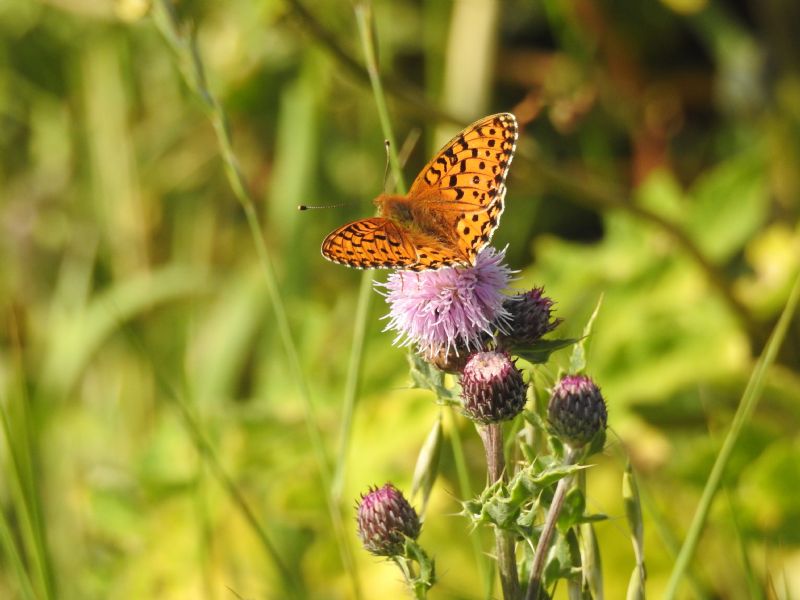
Dark Green Fritillary - Imago of Speyeria aglaja
Heath Fritillary (Melitaea athalia) Larvae feed on Common Cow-wheat, Ribwort Plantain, Germander Speedwell, Foxglove
High Brown Fritillary (Fabriciana adippe) Larvae feed on Common Dog-violet, Hairy Violet, Heath Dog-violet, Pale Dog-violet
Marsh Fritillary (Euphydryas aurinia) Larvae feed on Devil's-bit-Scabious, Field Scabious, Small Scabious
Pearl-bordered Fritillary (Boloria euphrosyne) Larvae feed on Common Dog-violet, Heath Dog-Violet, Marsh Violet
Silver-washed Fritillary (Argynnis paphia) July and September Larvae feed on Common Dog-violet
Small Pearl-bordered Fritillary (Boloria selene) Larvae feed on Common Dog-violet, Marsh Violet
Small Copper (Lycaena phlaeas) April to October Larvae feed on Common Sorrel, Sheep's Sorrel, Broad-leaved Dock
Wall Brown (Lasiommata megera) April to October. Larvae feed on Tor-grass, False Brome, Cock's-foot, Bents, Wavy Hair-grass, Yorkshire-fog
Rare Migrants Past and Present
Queen of Spain Fritillary (Issoria lathonia)
Brown Hairstreak
White-letter Hairstreak
Monarch (Danaus plexippus) from North America during hurricane season is an occasional visitor.
Short-tailed Blue are extremely rare migrants
Wood White used to be resident in Cornwall
The Bath White - Adults July to September - last time they were seen in Cornwall in great numbers was in 1945 when 700 were recorded
Moths
Cream-spot Tiger
Garden Tiger Moth
Scarlet Tiger Moth
Poplar Hawk Moth
Small Yellow Underwing
Fox Moth
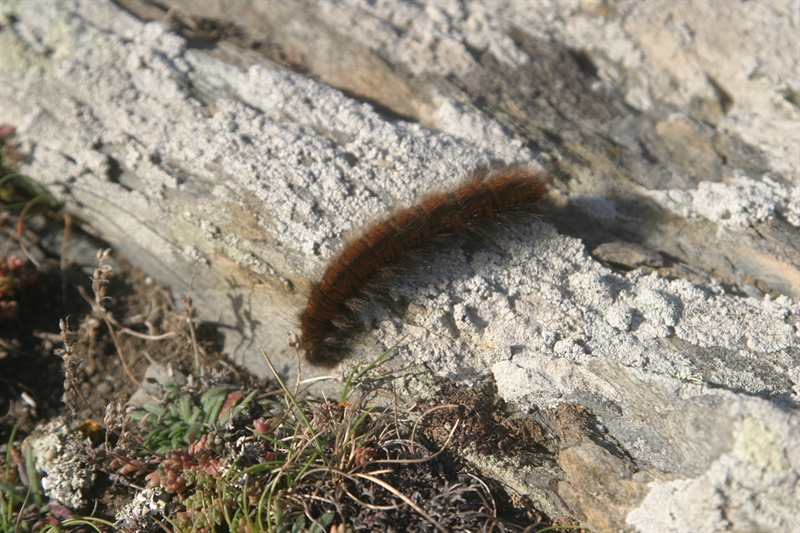
Fox Moth Caterpillar - Larva of Macrothylacia rubi
Pyrausta purpuralis
Cochylimorpha straminea
Micropterix calthella
Cydia ulicetana
Celypha lacunana
Lackey Moths
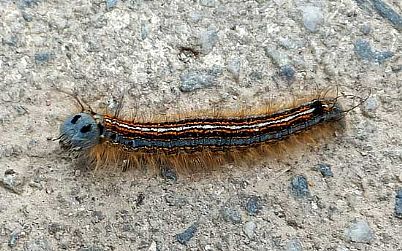
Lackey Moth Caterpillar - Larva of Malacosoma neustria
Orchard Ermine
Speckled Yellow Moth
Mother Shipton
China-mark
Cream Wave
White Wave
Silver Y
Silver Ground Carpet
Coupled Whites
Lime Hawk Moth
Hummingbird Hawkmoth
Common Footman
Brown Silver Line
Burnet Moth
Speckled Yellow Moth
Cinnabar Moth
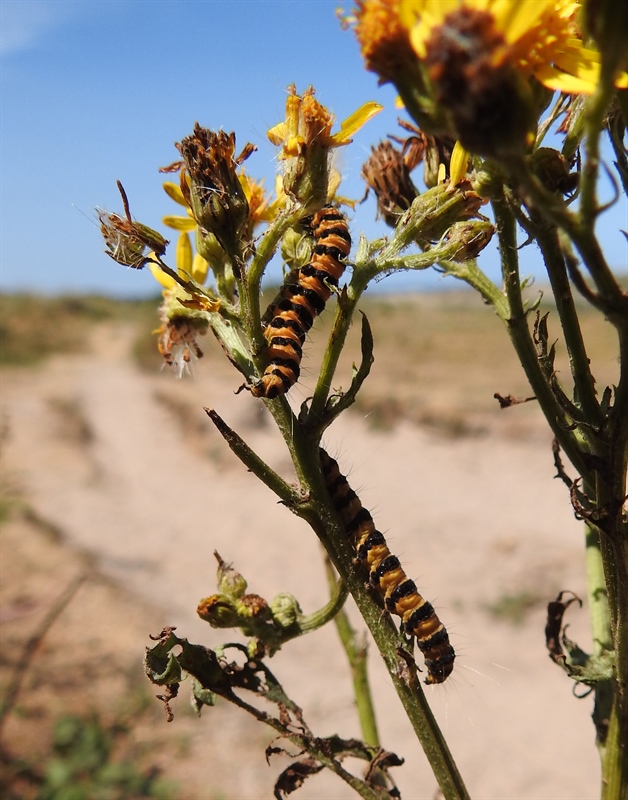
Cinnabar Moth Caterpillars - Larvae of Tyria jacobaeae
Emperor Moth
Privet Hawk Moth
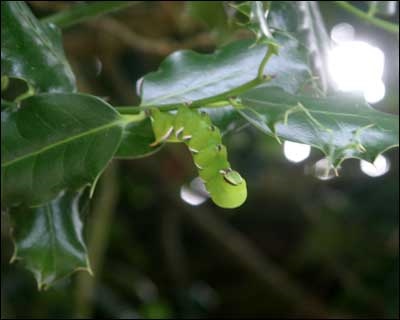
Privet Hawk Moth Caterpillar - Larva of Sphinx ligustri
Crimson Speckled moth
Books and Identification Guides
Links to websites
Cornwall Butterfly and Moth Society
Butterfly Identification Charts
Butterfly Conservation in Cornwall
Butterfly Identification in Cornwall
Butterfly Conservation Cornwall
Identifying Hairy Caterpillars
Butterflies and Moths in Cornish
Butterfly
Tykki Duw
Moth
Godhan
Click here to find
accommodation for
Butterflies and Moths



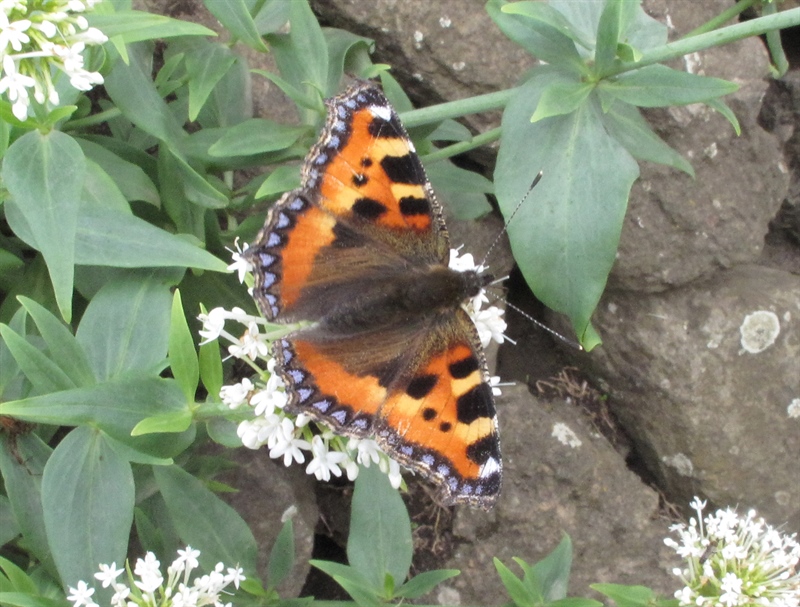
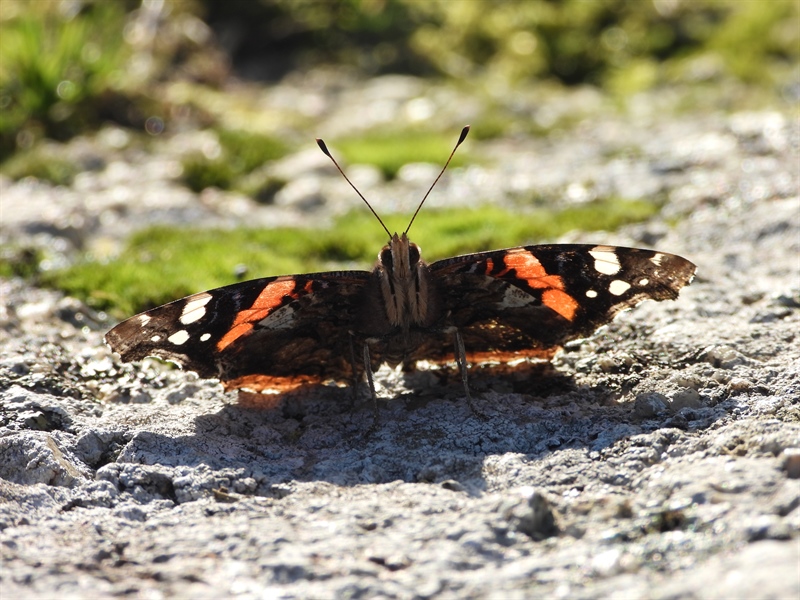
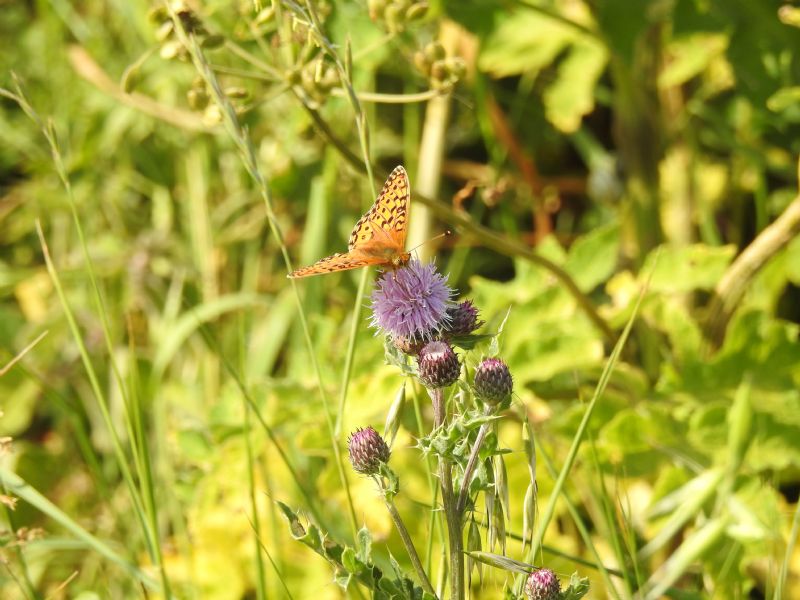


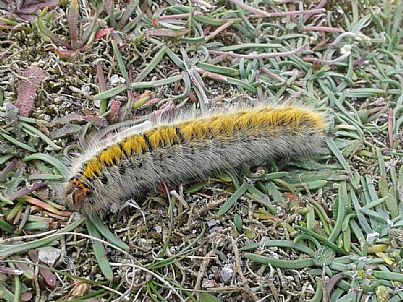
Things to do
in Cornwall
Maps of Cornwall :
The Ordnance Survey publishes the Explorer series of maps which are
ideal for walkers.
Scale 1 : 25 000
2.5 inches to 1 mile /
4cm to 1km.
Available in local bookshops or click on the links below to order online.
![]()
Those covering Cornwall:
-
OS Explorer Map 102 Land's End: Penzance & St Ives (OS Explorer)
-
OS Explorer Map (103) Lizard, Falmouth and Helston
-
OS Explorer Map 104 Redruth and St Agnes
-
OS Explorer Map (105) Falmouth and Mevagissey, Truro and St Mawes
-
OS Explorer Map (106) Newquay and Padstow
-
OS Explorer Map (107) St.Austell,Liskeard, Fowey, Looe and Lostwithiel
-
OS Explorer Map (108) Lower Tamar Valley and Plymouth
-
OS Explorer Map (109) Bodmin Moor
-
OS Explorer Map (111) Bude, Boscastle and Tintagel
-
OS Explorer Map (112) Launceston and Holsworthy
-
OS Explorer Map (126) Clovelly and Hartland
Map of Isles of Scilly:
OS Explorer Map (101) Isles of Scilly
For more information: www.ordnancesurvey.co.uk




